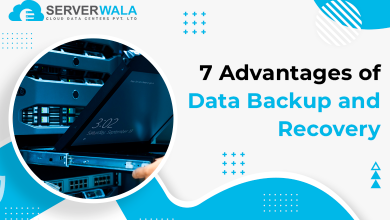How to Prevent Ransomware Attacks in 2024 (Complete Guide)

A ransomware attack is a type of malware that extorts victims into paying a fee to recover the data they hold. In this book, you will receive an introduction to the concept of ransomware as well as a thorough understanding of how to protect yourself from this scourge. As we begin chapter one, we will provide a brief overview of the history of ransomware and explain how it works.
Read more about ransomware prevention and protection in 2024. Is ransomware something you should worry about? A ransomware attack or a Trojan horse that encrypts or locks your computer can encrypt and lock your data. Ransomware demands a ransom immediately after encrypting a file, or holding it as a “digital hostage”. Preparedness will help you avoid being confronted with a locked laptop or encrypted file.
Which Devices are highly vulnerable to a Ransomware Attack?
Paying attention and using security software can greatly reduce your chances of getting infected. You can prevent the possibility of having to pay enormous amounts for the release of your data by using anti-ransomware. Ransomware Attacks may be downloaded from insecure or fraudulent websites, through software downloads, or spam emails, among other methods. Ransomware targets businesses of all sizes.
How vulnerable are you to security threats? Would you be vulnerable to a ransomware attack?
You may become the target of a ransomware attack for several reasons.
- We are no longer using a state-of-the-art device
- Its software is outdated
- Operating systems and/or browsers are no longer patched
- The backup plan is inadequate
- A concrete security plan hasn’t been established, and insufficient attention is being paid to security
Your device may be susceptible to a ransomware attack if it meets one or more of the following criteria. Kaspersky security software can perform a vulnerability scan to remedy this problem. As a result of scanning the computer’s operating system or installed programs for security vulnerabilities, the software identifies any weaknesses. These vulnerabilities, through which malware can enter, must be detected to prevent the computer from becoming infected.
How to Avoid/Prevent Ransomware Attacks?
Avoid Clicking on Unknown Links
Always avoid clicking links in spam or on unfamiliar websites: Never click on links in spam messages or on unfamiliar websites. An automatic download can be triggered by clicking on malicious links, causing your computer to be infected.
If an unknown source calls, texts, or emails you asking for personal information, please do not answer them. An attacker planning a ransomware attack may attempt to collect personal information about you in advance of the attack, which is then used to tailor the phishing message to you specifically. If you are unsure whether the message is legitimate, contact the sender directly.
Do not open Suspicious Email attachments
Ransomware is also spread through email attachments, so do not open them. Don’t open any attachments that seem dubious. Ensure that the sender and address are correct when you check the trustworthiness of an email. Attachments requiring macros should not be opened. The malicious macro will run when you open the attachment if your computer is infected.
Do not Connect to Corrupted USB Drives
You should never connect your computer to a USB drive from which you do not know the source. It is possible that cybercriminals infected the storage medium before leaving it in a public place so people would be enticed to use it.
Keep your OS Updated
Maintain an up-to-date operating system and program: Updating your operating system will prevent you from becoming infected with malware. Make sure you install the latest patches when you perform updates. This prevents cybercriminals from exploiting vulnerabilities.
Do not Download Media from Suspicious Sites
You can reduce the risk of downloading ransomware by not downloading media or software from unknown sites. Only download from trusted sites. Trust seals identify these types of websites. “https” should display in your browser address bar instead of “http”. A shield or lock symbol may appear in the address bar to signify that the page is secure. It is also advised to be careful when you download files from the internet. The Apple App Store can be trusted if you have an Apple device.
Avoid using Public Wi-Fi Networks
On public Wi-Fi networks, VPN services provide sensible protection against ransomware. Your computer has a higher risk of attack when using a public Wi-Fi network. If you need to conduct sensitive transactions online, avoid using public Wi-Fi or use a VPN.
Also Read: How to Prevent DDoS Attacks? – Best Practices to Follow
Should I buy Anti-Ransomware Software?
Thus, you might seem to be relatively safe in the short run, but you should still take precautions to prevent ransomware.
Anti-ransomware protection is now included in many standard antivirus packages. Most of these free packages (and traditional antivirus programs) use the same type of technology. Malware is detected by detecting signatures of known software. This approach leaves you open to zero-day infections.
The most Vulnerable Companies are the Targets of Ransomware Attacks
The threat of ransomware does not only affect individuals. Organizations are often targeted as well. Ransomware does not just target large, lucrative companies; it also targets small and medium-sized businesses (SMEs). As a result, they tend to have inadequate security systems, making them an especially attractive target for hackers.
To avoid ransomware infections, companies should consider the following factors.
- At all times, stay current with the latest operating system – even in the workplace. Historically, ransomware attacks have targeted companies that neglect this area (e.g. WannaCry 2017).
- A person who knows what to look for will be more effective at staving off attacks if they are taught what to look for. Establish a security protocol to allow employees to determine the trustworthiness of attachments, links, and emails.
- Make sure you have a backup plan in case of ransomware infection.
- Considering cloud technologies is a good idea if you haven’t already. Cloud-based architectures have the advantage that vulnerabilities can be exploited more difficult than those in on-premise systems. A cloud storage solution may also allow you to revert to an older version of your file. Cloud storage should allow you to restore an unencrypted file version if it has been encrypted by ransomware.
- Backups – even in business environments, it is essential to back up business-critical data to an external drive. It should be made clear who is responsible for this important task.
Protection before Prevention – Take Security Measures
As an additional infection-prevention measure, malware protection software should be used. By scanning your mail servers for viruses and implementing content filters, you can protect your organization from ransomware. Spam with malicious attachments and infected links is less likely to reach your inbox with these programs.
Kaspersky Internet Security is an excellent example of an Internet security solution. The software prevents infected files from being downloaded or streamed when you download or stream something. As a result, you can keep ransomware from infecting your computer and cybercriminals at bay. A special Kaspersky anti-ransomware tool is also available for additional assistance. By performing scans, the tool detects and blocks ransomware attacks. By protecting your data, the tool prevents local and remote attacks.
When you install the right software, you have already made significant progress. Take advantage of the latest protection offered by your internet security solution by updating it regularly. Security patches are included in each update and improved ransomware protection is enhanced.
- Data protection – prevent the worst scenario from occurring
When creating backups, watch out for these things –
Decrypting your computer is impossible when it is infected with ransomware. Always back up your important data. If you are creating a backup using your computer, be sure to disconnect the external drive. As soon as the ransomware begins encrypting your data, your connected hard drive will be affected. Therefore, you should regularly back up your data.
- Backup software – protection or threat?
You can use backup software instead of manually protecting your data. It is important to be cautious in this situation as well. It’s because some “security tools” are Trojan horses. Back-up software’s primary purpose is to create copies of all files, which means it has access to all files, as well as various privileges.
The direct connection between the software and the provider allows cybercriminals to add additional functions and commands to it. The users may be unaware of these additions. When searching for backup software, you should take great care to avoid such a situation. Kaspersky Total Security Tool, for example, offers a plug-in that allows the creation of backups. Using these plug-ins can eliminate the need for you to find third-party providers.
Also Read: 7 Advantages of Data Backup and Recovery
Summing Up
A good security program is a must when it comes to defending against ransomware. It is especially important to keep backups when dealing with this type of malware since they will ensure you’re prepared even in the worst-case scenario. Should you become a victim of ransomware despite taking these preventive and protective measures, you can find instructions on how to remove malicious software here.




